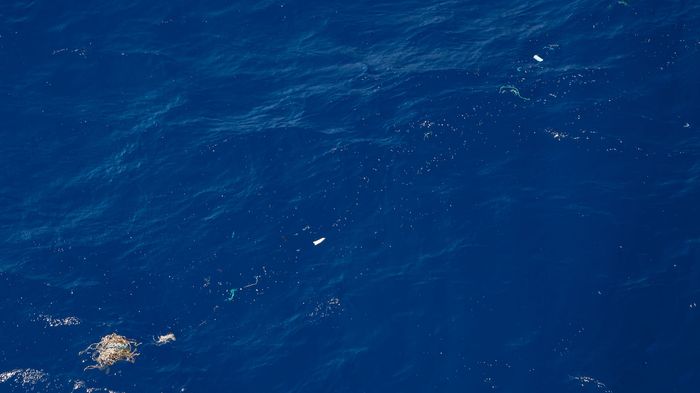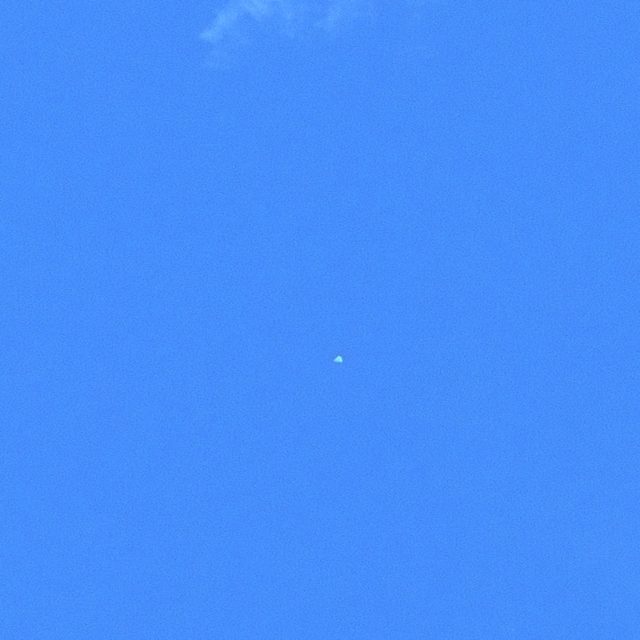
Towards Spaceborne Detection of Ocean Plastic
Back to updatesIn 2017, we announced our research partnership to investigate Remote Sensing of Marine Litter (RESMALI project) with the European Space Agency (ESA), ARGANS Ltd., and other spatial sector organizations. Remote sensing of plastic litter has the potential to map hotspots of plastic pollution worldwide, helping us focus on the effective deployment of cleanup solutions.
In remote sensing, we observe the Earth using cameras on satellites. Some satellite cameras, called hyperspectral cameras, can detect changes in the light spectrum, seeing beyond the usual colors of red, green, and blue. As each material type has a unique hyperspectral footprint, in theory, a satellite could detect the material type of every object – even plastics – from space with a hyperspectral camera. However, the camera must have a high resolution to see in enough detail.
You might know of resolution when choosing a 12 megapixel (MP) digital camera on your phone or 4K (pixels) for your TV screen to have a higher quality image or photo. Though a crucial component for plastic detection, resolution is not enough to describe how detailed you can see objects: for that, you need to know how far away the camera is from the scene and how your camera lens behaves. In remote sensing, ground sample distance (GSD) is used to describe how detailed an object can be seen, transforming resolution into the dimensions covered by each pixel in space. For example, the best commercial satellites offer “very high resolution” (VHR) greyscale imagery at a GSD of 30 cm/pixel, which means each pixel covers 30 cm by 30 cm. To detect plastic litter from space, we need cameras that are both hyperspectral and have a good GSD.
This animation starts with a typical ghost net (~ 3 m) observed by UAV at a GSD of 2 cm/pixel, then shows how it fits in one UAV image. Next, the total extent of the UAV survey is revealed, with the vessel of The Ocean Cleanup seen in the northeast corner. Although a far zoom-out from the starting image, this area still spans only 0.7 km2 and only contains only one ghost net. A much larger area needs to be surveyed to detect more similar items (question marks) and obtain reliable statistics about the concentration on this location.
Understanding how detailed a GSD needs to be has been the central question to the RESMALI project, and after several years of research, we have published our results in the Journal of Hazardous Material.
In the experiment, we were able to detect plastics down to 1% surface concentration, using a lab sensor (spectrophotometer) with a single 0.017 m2 pixel (equivalent to a single pixel at 13 cm/pixel GSD). Scaled up to a real satellite remote sensing scenario, this 1% surface coverage could be achieved for a large plastic litter object, for example, an object with a 1 m2 top-view area which occurs roughly once per km2. To detect this object, the satellite camera must be hyperspectral and have a GSD of 10 m/pixel or less. Currently, there are no operational satellites that meet these requirements. This is further complicated when we consider that the surface concentrations of microplastic in the Great Pacific Garbage Patch (GPGP) are typically lower than 1%. Nonetheless, having these requirements will aid the future design of a satellite mission for plastic litter detection.
The study also focused on the spectral reflectance of several types of ocean plastics. The spectral reflectance was measured in a number of experimental conditions, including different concentrations of plastic at the surface, and varying the orientation of the spectrophotometer . Under these conditions, we looked at how the ocean plastic appeared in the visible to far-infrared range under sunlight. In summary, the main conclusions were:
- Water strongly affects the spectral reflectance of ocean plastics,
- The degree of biofouling and brightness of material will also influence the reflectance,
- Under ideal circumstances and given a suitable sensor, plastic litter is detectable down to 1% surface concentration from space.
The Ocean Cleanup is not only looking at remote sensing from satellites to detect ocean plastics; these results complement the work we are doing on remote sensing of river and coastal plastics. What also makes this contribution unique is that it focuses on open ocean plastics – plastics that are the hardest to detect, far away from land sources, and scattered over hundreds of thousands of square kilometers.
THE CHALLENGES OF SATELLITE DETECTION AND EXISTING ALTERNATIVES
While the results from RESMALI will be used to drive the design of future plastic litter detection satellites, we are concerned about mapping the problem using currently available technologies. Because a suitable satellite for hyperspectral detection doesn’t exist yet, we also turn to Unmanned Aerial Vehicles (UAVs) and optical VHR satellite imagery to detect plastics by their shape and color. To do this, the GSD needs to be very high: better than 30 cm/pixel. UAVs can get down to millimeters of GSD, but the more detailed you go, the less area you can cover.
This animation shows two items of plastic litter observed by UAV at 1.5 cm/pixel GSD. By downscaling it to VHR resolution (30 cm/pixel) and even lower (3 m/pixel), it becomes clear that it is difficult to detect these objects from space
Large plastic litter (> 50 cm) in the GPGP occur once per square kilometer on average. To properly measure the variation around this average concentration, we need to be able to scan multiple square kilometers. While satellites can cover an area this broad, they miss bigger objects when clouds are present or the sea state is rough. UAVs, on the other hand, have a high GSD and are not obstructed by clouds. However, ordinary electric UAVs can only scan 0.5 – 1 km2, which is far too little. To bridge this gap, we are pioneering the deployment of fixed-wing or VTOL (vertical take-off and landing) UAVs for scanning large (10 km2) areas of open ocean. We are grateful for the assistance of Airbus and Maxar for providing VHR imagery to further pioneer the detection of debris from space.

A suspected GPGP plastic litter object under ideal wind and ocean conditions seen by Airbus Pleíades which has a GSD of 50 cm. Objects like this, a few meters in size, are very rare. (© CNES 2018 – Distribution Airbus DS)
PROJECT SPOTS: SPECTRAL PROPERTIES OF SUBMERGED AND BIOFOULED MARINE PLASTIC LITTER
As a follow-up to the RESMALI project, the ESA has commissioned a range of new projects under the ESA Discovery Campaign on Remote Sensing of Plastic Marine Litter. The Ocean Cleanup was selected to lead one of the projects, named SPOTS (Spectral Properties of submerged and biofouled marine plastic litter), in collaboration with Dr. Shungu Garaba from the University of Oldenburg and Dr. Konstantinos Topouzelis from University of the Aegean.
A plastic jug floats near System 001 in 2018. While floating, the object is not protruding above the water surface and has various spots of biofouling. The RESMALI research already indicated that both factors influence the hyperspectral signal. In the SPOTS project, we will obtain more quantitative data about the effect of different water depths and degrees of biofouling on the spectral reflectance of plastic litter.
This project will take a closer look at the influence of biofouling and water depth on the spectral reflectance of plastics. By varying the water depth and degree of biofouling in a systematic way and a controlled lab and outdoor environment, we will gather a more detailed dataset about the influence of both these factors on the hyperspectral signal of plastic litter.



